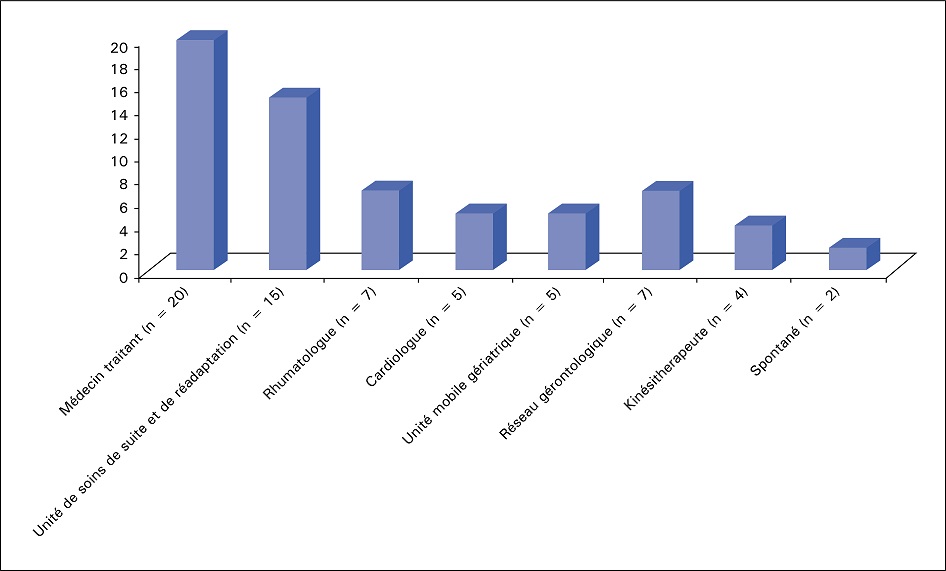Gériatrie et Psychologie Neuropsychiatrie du Vieillissement
MENUPrise en charge de sujets âgés chuteurs en atelier « Équilibre et prévention des chutes » en hôpital de jour gériatrique : étude observationnelle prospective Volume 20, issue 1, Mars 2022
- Key words: balance workshop, frailty, motor function, rehabilitation
- DOI : 10.1684/pnv.2022.1023
- Page(s) : 53-62
- Published in: 2022
Introduction
Falls are a major public health problem as a result of the high frequency of these events and morbidity/mortality among elderly persons. A prevention policy is a potential means to reduce the incidence of falls. This study aimed to assess the impact of a balance workshop in a geriatric day-hospital (GDH) on the prevention of falls in older adults.
Method
This was a prospective, single centre study conducted in the GDH of a general hospital. Motor tests and a psychological assessment were performed at 2 months (M2), 6 months (M6) and 1 year (M12).
Results
Sixty-five patients were included, aged 82.0 ± 7.7 years. Fifty-eight were women (89.2%). The statistical analyses showed a significant improvement in all motor tests during the follow-up at the defined intervals. The Timed Up and Go test (s) significantly decreased between inclusion, 19.1 ± 8.2, and M2, 15.8 ± 6.6 (P = 0.01 inclusion vs M2), then was stable at M6, 16.4 ± 6.9 (P = 0.04 inclusion vs M6) and at M12, 16.3 ± 6.4 (P = 0.04 inclusion vs M12). There was also significant psychological improvement throughout follow-up. The score on the Falls Efficacy Scale International-I decreased from 11.6 ± 6.1 at inclusion to 8.2 ± 5.5 at M2 (P = 0.001 inclusion vs. M2), 9.2 ± 6.0 at M6 (P = 0.02 inclusion vs. M6), and 9.0 ± 6.1 at M12 (P = 0.02 inclusion vs. M12).
Conclusion
This study highlights the value and the need for balancing workshops in primary care.


